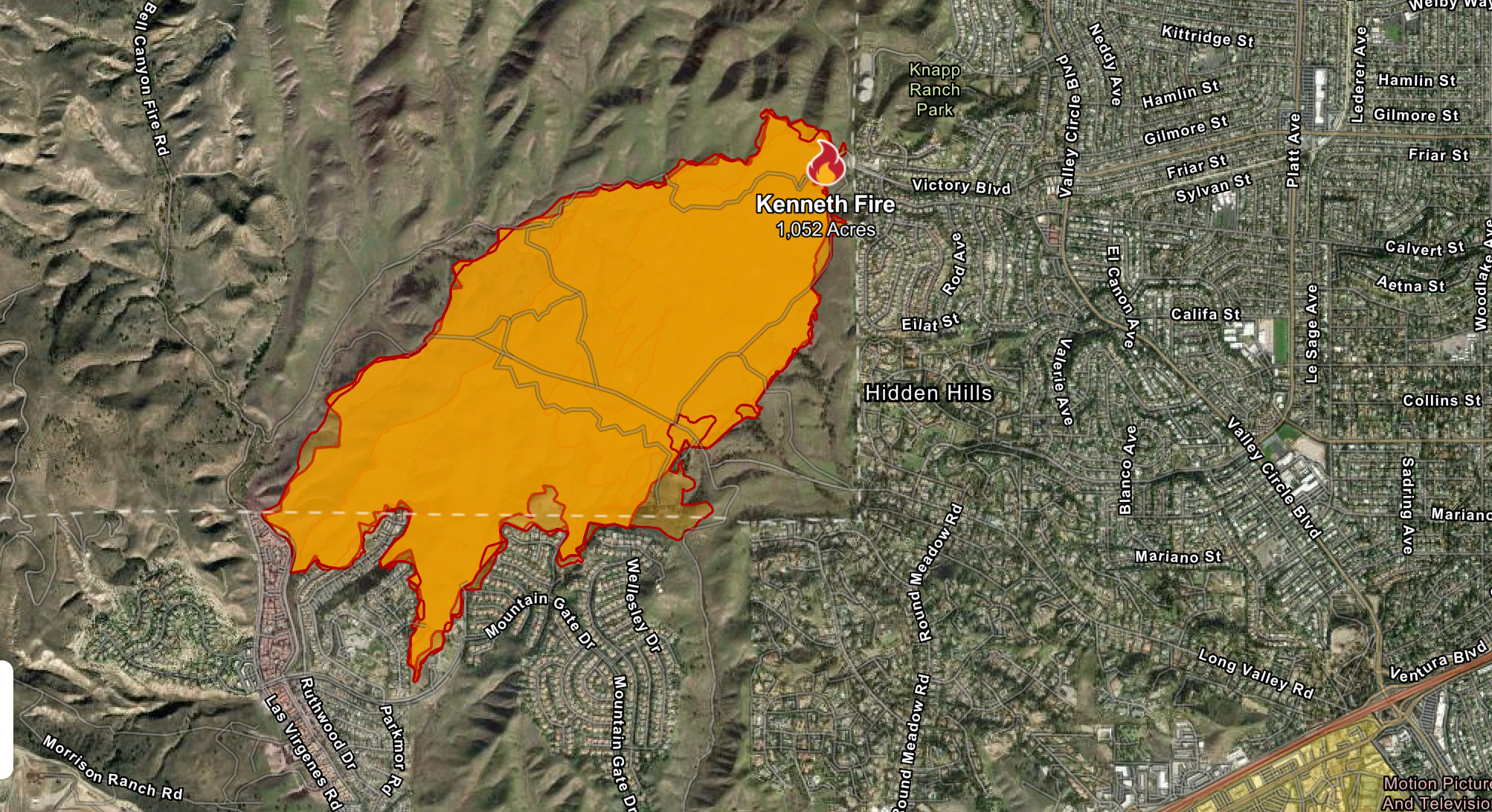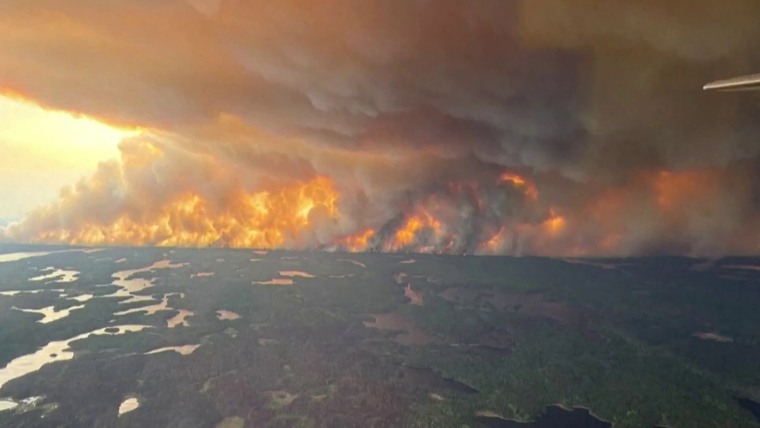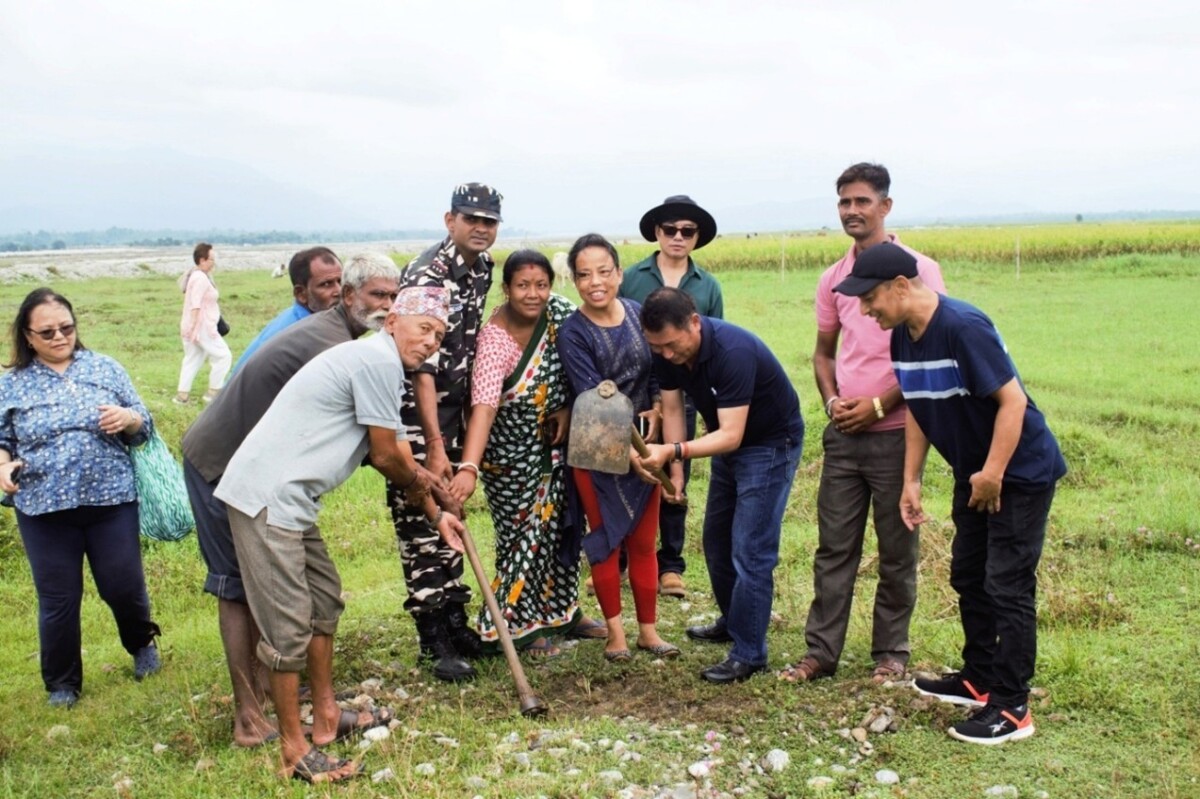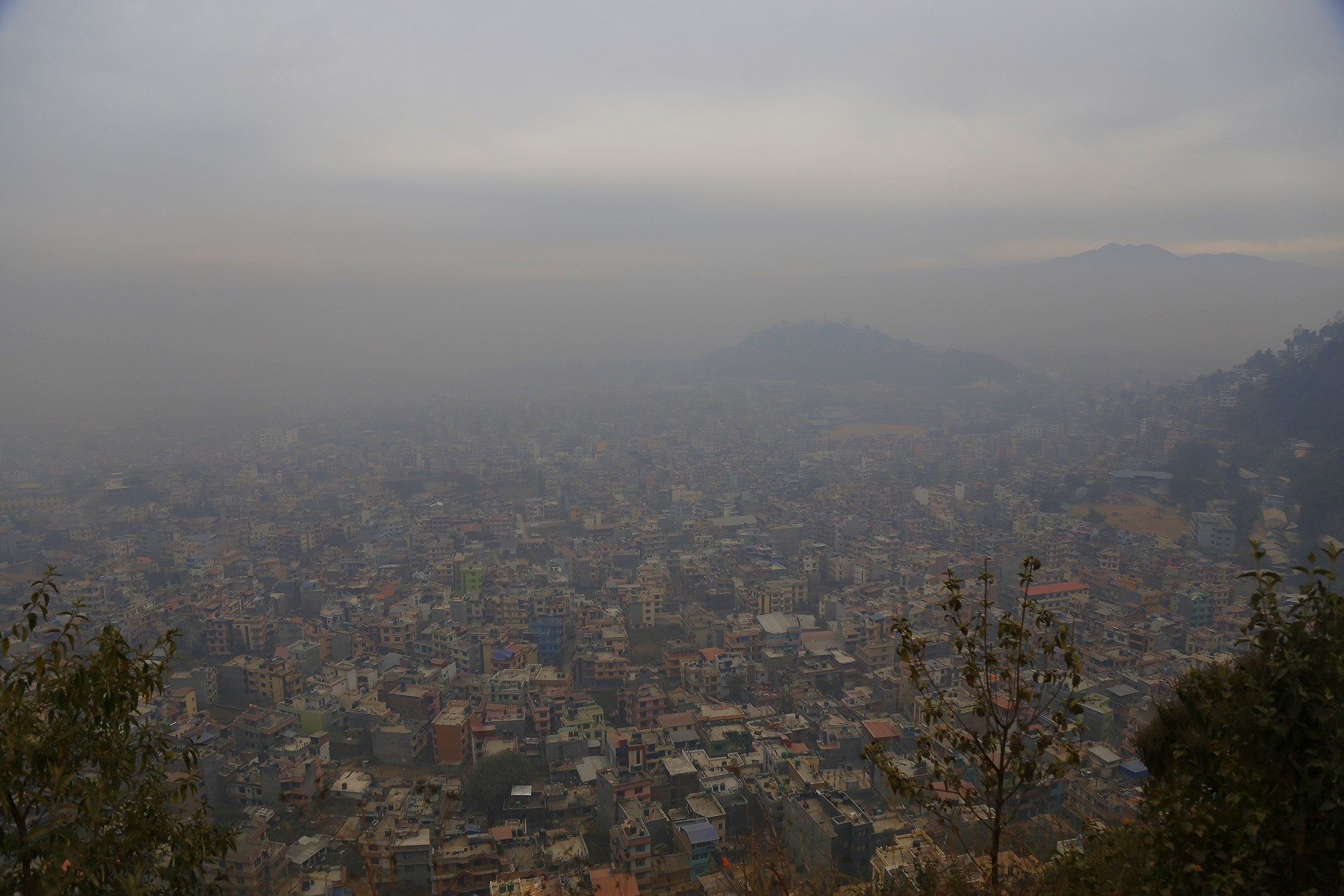Report on the Canyon Fire: An Analysis of Impacts on Sustainable Development Goals
1. Executive Summary
The Canyon Fire, which ignited in Southern California, presents a significant challenge to regional sustainability, directly impacting several United Nations Sustainable Development Goals (SDGs). Fueled by extreme heat and dry conditions, the wildfire has necessitated a large-scale emergency response, highlighting critical issues related to public health (SDG 3), community safety (SDG 11), climate action (SDG 13), terrestrial ecosystems (SDG 15), and institutional partnerships (SDG 17). This report details the incident and analyzes its implications through the lens of these global goals.
2. Incident Status and Containment Efforts
The wildfire’s rapid progression underscores the vulnerability of the region to climate-related disasters.
- Origin: The fire began on Thursday afternoon in a remote area between Ventura and Los Angeles counties.
- Progression: The fire expanded from 4,756 acres with 0% containment on Friday morning to 5,370 acres with 48% containment by Saturday afternoon.
- Response Team: A significant force of 1,148 personnel was deployed, utilizing 45 engines, seven helicopters, and three dozers, demonstrating a robust mobilization of resources to protect communities and ecosystems.
3. Public Health and Community Well-being (SDG 3 & SDG 11)
The fire’s consequences extend far beyond the burn perimeter, posing direct threats to human health and community stability, which are central to SDG 3 (Good Health and Well-being) and SDG 11 (Sustainable Cities and Communities).
3.1. Air Quality and Health Risks (SDG 3)
The South Coast Air Quality Management District issued an alert due to harmful smoke pollution, directly challenging the objectives of SDG 3.
- Affected Areas: The alert covered the Santa Clarita Valley, San Fernando Valley, San Gabriel Valley, and the Inland Empire.
- Health Advisory: Officials warned that particles in wildfire smoke can cause severe health problems, including heart attacks, strokes, and asthma attacks.
- Vulnerable Groups: The alert emphasized the heightened risk for individuals with pre-existing health conditions, older adults, pregnant people, and children, stressing the need for equitable health protection.
- Occupational Safety: Several firefighters sustained injuries, highlighting the occupational hazards associated with emergency response and the importance of ensuring safe working environments as outlined in SDG 3 and SDG 8.
3.2. Community Safety and Resilience (SDG 11)
The fire threatened the safety and security of established communities, testing the resilience of local infrastructure and emergency plans.
- Threat to Homes: The fire threatened approximately 5,118 homes in and around Hasley Canyon and Val Verde.
- Evacuations: Mandatory evacuation orders were initially issued for 5,000 people, with warnings affecting another 11,000, disrupting thousands of lives and challenging the goal of creating safe and resilient human settlements.
- Community Response: Evacuation orders were later downgraded to warnings as containment efforts progressed, allowing residents to return but underscoring the ongoing risk.
4. Environmental Drivers and Impacts (SDG 13 & SDG 15)
The incident is intrinsically linked to broader environmental challenges, namely climate change and biodiversity loss, reflecting the urgent need for progress on SDG 13 (Climate Action) and SDG 15 (Life on Land).
- Climate Factors (SDG 13): The fire was exacerbated by conditions consistent with climate change, including “extreme heat,” high temperatures in the mid-90s, and gusty winds. These factors highlight the increasing frequency and intensity of climate-related disasters that SDG 13 aims to combat.
- Ecosystem Degradation (SDG 15): The blaze was fueled by “historically dry vegetation,” pointing to a degraded and vulnerable terrestrial ecosystem. The destruction of over 5,370 acres of land represents a direct setback to the goal of halting biodiversity loss and restoring ecosystems.
5. Partnerships for the Goals (SDG 17)
The response to the Canyon Fire exemplifies the importance of strong, multi-level collaboration, a cornerstone of SDG 17 (Partnerships for the Goals).
- Inter-Agency Coordination: The firefighting effort involved a coordinated response from state (CalFire) and local (Ventura County Fire, L.A. Fire Department) agencies.
- Federal Support: The Federal Emergency Management Agency (FEMA) authorized the use of federal funds to assist California, approving a Fire Management Assistance Grant. This grant covers up to 75% of eligible firefighting costs, demonstrating a critical partnership to mobilize financial resources for disaster response.
SDGs Addressed in the Article
SDG 3: Good Health and Well-being
- The article extensively discusses the health impacts of the wildfire. It highlights the issuance of an “air quality alert” due to “harmful air pollution” from the smoke. It explicitly states that “Particles in wildfire smoke can get deep into the lungs and cause serious health problems such as heart attacks, strokes, asthma attacks, and difficulty breathing,” directly linking the environmental disaster to human health and well-being.
SDG 11: Sustainable Cities and Communities
- This goal is relevant as the article focuses on the safety and resilience of communities in Ventura and Los Angeles counties. It details the threat to human settlements, noting that “the fire was threatening approximately 5,118 homes.” The implementation of “Mandatory evacuations” for 5,000 people and “Evacuation warnings” for 11,000 more demonstrates efforts to make communities safer and more resilient in the face of natural disasters.
SDG 13: Climate Action
- The article connects the wildfire to climate-related factors by mentioning it was “fueled by dry brush and extreme heat.” The reference to “Historically dry vegetation” points towards the effects of climate change, which exacerbates such conditions. The entire emergency response is an exercise in adapting to and strengthening resilience against climate-related hazards.
SDG 15: Life on Land
- The core event of the article, a wildfire, is a direct threat to terrestrial ecosystems. The report that the “wildfire had spread to 5,370 acres” signifies a significant impact on land and biodiversity. The efforts to contain the fire are actions to protect and prevent further degradation of these ecosystems.
Specific SDG Targets Identified
SDG 3: Good Health and Well-being
-
Target 3.9: By 2030, substantially reduce the number of deaths and illnesses from hazardous chemicals and air, water and soil pollution and contamination.
- The article directly addresses this target by describing the “harmful air pollution” from the Canyon Fire. The issuance of an air quality alert by the South Coast Air Quality Management District is a direct response to air contamination. The warning that smoke can cause “serious health problems” for the population, especially vulnerable groups, aligns perfectly with the goal of reducing illnesses from air pollution.
SDG 11: Sustainable Cities and Communities
-
Target 11.5: By 2030, significantly reduce the number of deaths and the number of people affected and substantially decrease the direct economic losses relative to global gross domestic product caused by disasters… with a focus on protecting the poor and people in vulnerable situations.
- The article details the number of people affected by the disaster, including “mandatory evacuations… for approximately 5,000 people” and “evacuation warnings… for another 11,000 people.” It also mentions the threat to property (“5,118 homes”) and the mobilization of FEMA funds, which relates to mitigating economic losses from the disaster.
-
Target 11.b: By 2020, substantially increase the number of cities and human settlements adopting and implementing integrated policies and plans towards… adaptation to climate change, disaster risk reduction…
- The coordinated response described in the article, involving CalFire, the National Weather Service, the South Coast Air Quality Management District, and FEMA, is an example of an implemented disaster risk reduction plan. Actions like issuing alerts, ordering evacuations, and deploying firefighting resources demonstrate a structured plan to manage the disaster.
SDG 13: Climate Action
-
Target 13.1: Strengthen resilience and adaptive capacity to climate-related hazards and natural disasters in all countries.
- The wildfire, fueled by “extreme heat” and “historically dry vegetation,” is a climate-related natural disaster. The entire response effort, from the deployment of “1,148 personnel, 45 engines, seven helicopters” to the authorization of federal funds by FEMA, represents an effort to strengthen resilience and adaptive capacity to such events.
SDG 15: Life on Land
-
Target 15.2: By 2020, promote the implementation of sustainable management of all types of forests, halt deforestation, restore degraded forests and substantially increase afforestation and reforestation globally.
- The firefighting efforts to “secure the fire’s perimeter” and achieve containment are direct actions to halt the degradation of the affected land. The wildfire itself represents a significant challenge to the sustainable management of the local ecosystem.
-
Target 15.3: By 2030, combat desertification, restore degraded land and soil, including land affected by desertification, drought and floods, and strive to achieve a land degradation-neutral world.
- The article mentions that the fire was fueled by “dry brush” and “historically dry vegetation,” which are conditions related to drought and land degradation. The fire itself is a major cause of land degradation, and the containment efforts (“48% contained”) are a direct measure to combat this process.
Indicators for Measuring Progress
Indicators for SDG 3
-
Indicator for Target 3.9
- The issuance of an “air quality alert” serves as an indicator of monitoring air pollution levels. The advisory warning people to “avoid or limit outdoor activities” and stay inside is a qualitative measure of public health actions taken to reduce exposure to harmful air.
Indicators for SDG 11
-
Indicators for Target 11.5
- Number of people affected by the disaster: The article provides specific numbers, such as “5,000 people” under mandatory evacuation and “11,000 people” under evacuation warnings.
- Number of housing units threatened: The article states the fire was “threatening approximately 5,118 homes.”
- Direct economic support for disaster response: The authorization of FEMA funds, covering “up to 75% of eligible firefighting costs,” is a financial indicator of disaster response.
Indicators for SDG 13
-
Indicators for Target 13.1
- Resources mobilized for disaster response: The article lists specific resources deployed, including “1,148 personnel, 45 engines, seven helicopters, three dozers and nine hand crews,” which indicates the scale of the adaptive response.
- Existence of a multi-agency disaster response plan: The coordinated action between CalFire, FEMA, and local air quality districts implies the presence of an implemented plan.
Indicators for SDG 15
-
Indicators for Target 15.3
- Area of land degraded by wildfire: The article specifies the affected area as “5,370 acres.”
- Progress in combating land degradation: The containment level, “48% contained,” is a direct indicator of progress in halting the spread of the fire and, therefore, the degradation.
Summary Table of SDGs, Targets, and Indicators
| SDGs | Targets | Indicators |
|---|---|---|
| SDG 3: Good Health and Well-being | 3.9: Reduce illnesses from air pollution and contamination. | Issuance of an “air quality alert” due to harmful smoke. |
| SDG 11: Sustainable Cities and Communities | 11.5: Reduce the number of people affected by disasters. | Number of people evacuated (5,000) and under warning (11,000); Number of homes threatened (5,118). |
| 11.b: Implement integrated policies for disaster risk reduction. | Coordinated response involving CalFire, FEMA, and local agencies. | |
| SDG 13: Climate Action | 13.1: Strengthen resilience to climate-related disasters. | Deployment of firefighting resources (1,148 personnel, 45 engines, etc.); Authorization of FEMA funds. |
| SDG 15: Life on Land | 15.2: Halt deforestation and restore degraded forests. | Firefighting efforts to secure the fire’s perimeter and halt ecosystem degradation. |
| 15.3: Combat desertification and restore degraded land. | Area of land affected (5,370 acres); Fire containment progress (48%). |
Source: ca.news.yahoo.com







